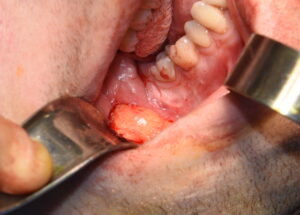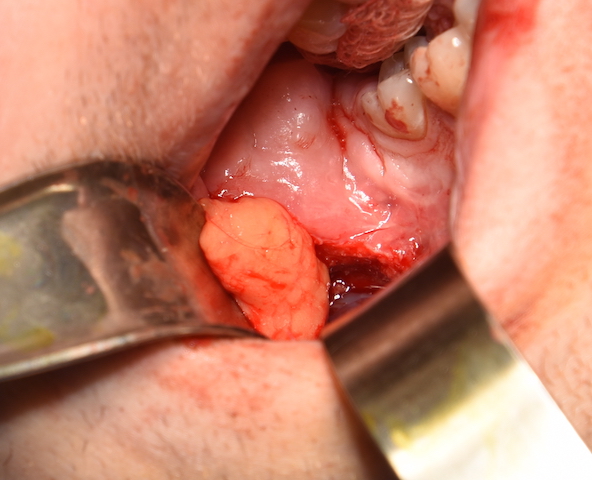Surgery of the jaw angle is approached intraorally from the posterior mandibular vestibular incision. From sagittal split osteotomies to angle fractures to aesthetic jaw angle implants this incision provides the most direct access to this bony facial region. It is placed in the depth of the vestibule opposite the second/third molar teeth. Once passing through the mucosa and the buccinator muscle the periosteum of the bone is encountered. The only structure of any significance found on the way to the bone is the long buccal neurovascular bundle which supplies sensation to the inner cheek mucosa.
Because of the location of the incision way back in the mouth and exposed to food debris from the chewing surfaces of the molars it is more prone to wound breakdown and infection than any other intraoral incision. If it is an autologous bone only procedure (osteotomies or fracture repairs) such wounds breakdowns usually go on to heal uneventfully because there is vascularized bone underneath it and the infection risk is very low. When there is an implant underneath the incision, however, the infection risk is much higher.
The posterior vestibular mucosal incision is also prone to thinning out with recurrent surgery….as often happens to incisions anywhere This is evidenced by a deepening of the vestibule due to scar contracture. When implants are placed under such scarred incisions uncomplicated wound healing is not assured with thinner scarred tissues.


This is a very reliable reconstructive intraoral flap whose only tradeoff is the potential for some modest cheek reduction fullness.
Dr. Barry Eppley
Indianapolis, Indiana



